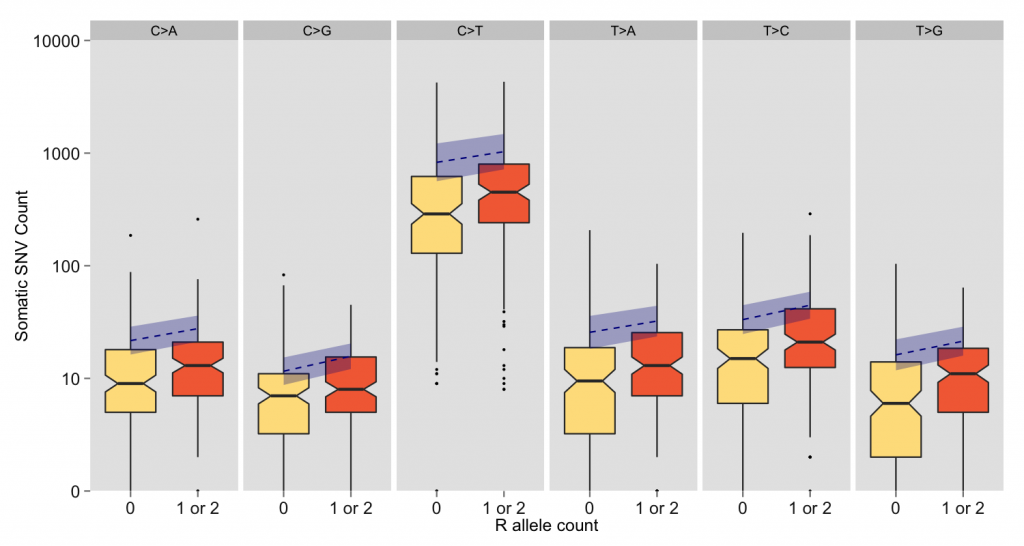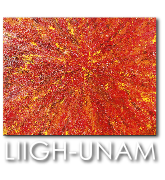Dr Daniela Robles is interviewed for finding that Genetic variants in ‘red hair gene’ associated with increased number of skin cancer mutations
09 Aug 2016 | 17:27 BST | Posted by Lillienne Zen | Category: Featured, Nature Research, Research findings

Carla Daniela Robles Espinoza
MAMUN RASHID
Melanoma patients with genetic variants in the ‘red hair gene’, MC1R, have more mutations in their cancers compared to patients without such variants, found a study published in Nature Communications last week. Carla Daniela Robles Espinoza, one of the authors on the paper, takes us through the findings.
What were your main findings?
In this study, we wanted to investigate whether having common genetic variants in the red hair gene (called MC1R) can influence the number of mutations found in melanoma tumours. It has long been known that redheads are more prone to developing melanoma.
This is thought to be because they burn more easily in the sun, as exposure to UV light is one of the main risk factors for developing this cancer. However, there seems to be more to the story of how MC1R genetic variants increase the risk of developing melanoma. For example, previous studies have shown that, in mice, there is a sunlight-independent contribution to melanoma risk via the synthesis pathway of the red pigment1, and that there is an association between MC1R and melanoma risk which occurs independently of sun exposure in humans2.
Here, we analysed the melanoma tumours from more than 400 patients and observed an increase in the number of mutations in patients carrying variants in MC1R. This effect was observed also in individuals that are not necessarily red-headed (those with only one variant copy of the MC1R gene as opposed to two), which means that these people might also be highly susceptible to the mutagenic effects of UV light. However, we observed this increase in all types of tumour mutations, not only the ones associated to UV damage.
We could also quantify this contribution, noting that the expected number of sun-related mutations associated with an MC1R variant is comparable to the number gained in about 21 additional years of age. Therefore, our study provides evidence of the existence of additional mutagenic processes in melanoma patients with MC1R variants, which make up about 26-40% of the patient population3.
How does this work link melanoma and the gene MC1R?
Many studies had noted that people carrying MC1R variants are more susceptible to developing melanoma, but only recently we have started to fully understand the reasons. We provide evidence that there may be additional mechanisms, beyond the effects of UV alone, that contribute to elevating the risk of melanoma in patients with MC1R genetic variants. MC1R has important roles in DNA repair and cell survival; thus, processes that increase the risks of developing cancer might include the generation of DNA-damaging stress when making up the red pigment or a decreased ability to repair DNA in carriers of MC1R variants.
In this study we also report that primary melanocytes (the cells where melanoma originates) with incomplete MC1R function show defects in survival and DNA repair, suggesting this might be one of the mechanisms through which MC1R function impacts melanoma risk.

What is the significance of this research for melanoma patients and for the general population?
The conclusion of our study is important because it has relevance for people who are MC1R carriers (for example, about 21% of the British and Irish population, 10% of the French population and 16% of the population in the United States4). This means that the majority of these people, who will not have red hair, are still more susceptible to the effects of melanoma mutagens than people with no MC1R variants, with UV light the most established environmental risk factor.
The results suggest that MC1R carriers should take care in the sun following established guidelines (for example: http://www.cancerresearchuk.org/about-cancer/causes-of-cancer/sun-uv-and-cancer/ways-to-enjoy-the-sun-safely).
Can you outline any future research steps?
Future research will aim to understand the different processes through which MC1R can increase the risk of developing melanoma, and also to look for other genetic contributors to skin cancer predisposition. This will hopefully help us to identify the people who are at increased melanoma risk and allow us to better inform patient management and public health campaigns.
References:
1. Mitra D et al. An ultraviolet-radiation-independent pathway to melanoma carcinogenesis in the red hair/fair skin background. Nature. 2012 Nov 15;491(7424):449-53. doi: 10.1038/nature11624. Epub 2012 Oct 31.
2. Wendt J et al. Human Determinants and the Role of Melanocortin-1 Receptor Variants in Melanoma Risk Independent of UV Radiation Exposure. JAMA Dermatol. 2016 Apr 6. doi: 10.1001/jamadermatol.2016.0050. [Epub ahead of print]
3. Williams, P. F., Olsen, C. M., Hayward, N. K. & Whiteman, D. C. Melanocortin 1 receptor and risk of cutaneous melanoma: a meta-analysis and estimates of population burden. Int. J. Cancer 129, 1730–1740 (2011).
4. Gerstenblith MR et al. Comprehensive evaluation of allele frequency differences of MC1R variants across populations. Hum Mutat 2007 May;28(5):495-505. doi:10.1002/humu.20476
In regard to this finding consult also the following links:
SopaboxScience (Nature): http://blogs.nature.com/soapboxscience/2016/08/09/genetic-variants-in-red-hair-gene-associated-with-increased-number-of-skin-cancer-mutations
Genética Médica: http://revistageneticamedica.com/2016/07/21/mc1r-pelirrojo-melanoma-mutaciones/
SheKnows: http://www.sheknows.com/health-and-wellness/articles/1126943/health-issues-in-redheads
BBC: http://www.bbc.com/news/health-36762630
The Guardian: https://www.theguardian.com/science/2016/jul/12/scientists-closer-to-understanding-why-red-hair-genes-increase-skin-cancer-risk
The Times: https://www.thetimes.co.uk/article/hidden-ginger-gene-puts-25-at-greater-risk-of-skin-cancer-ftzxn2jdp
Washington Post: https://www.washingtonpost.com/national/health-science/why-redheads-and-their-children-seem-to-get-skin-cancer-more-than-others/2016/07/15/1be34fa2-487f-11e6-90a8-fb84201e0645_story.html?utm_term=.80a770dc1e97
Weather Channel: https://weather.com/health/news/red-hair-melanoma-gene-cancer
The Scientist: https://www.the-scientist.com/?articles.view/articleNo/46528/title/-Redhead–Gene-Variant-Boosts-Melanoma-Risk/
